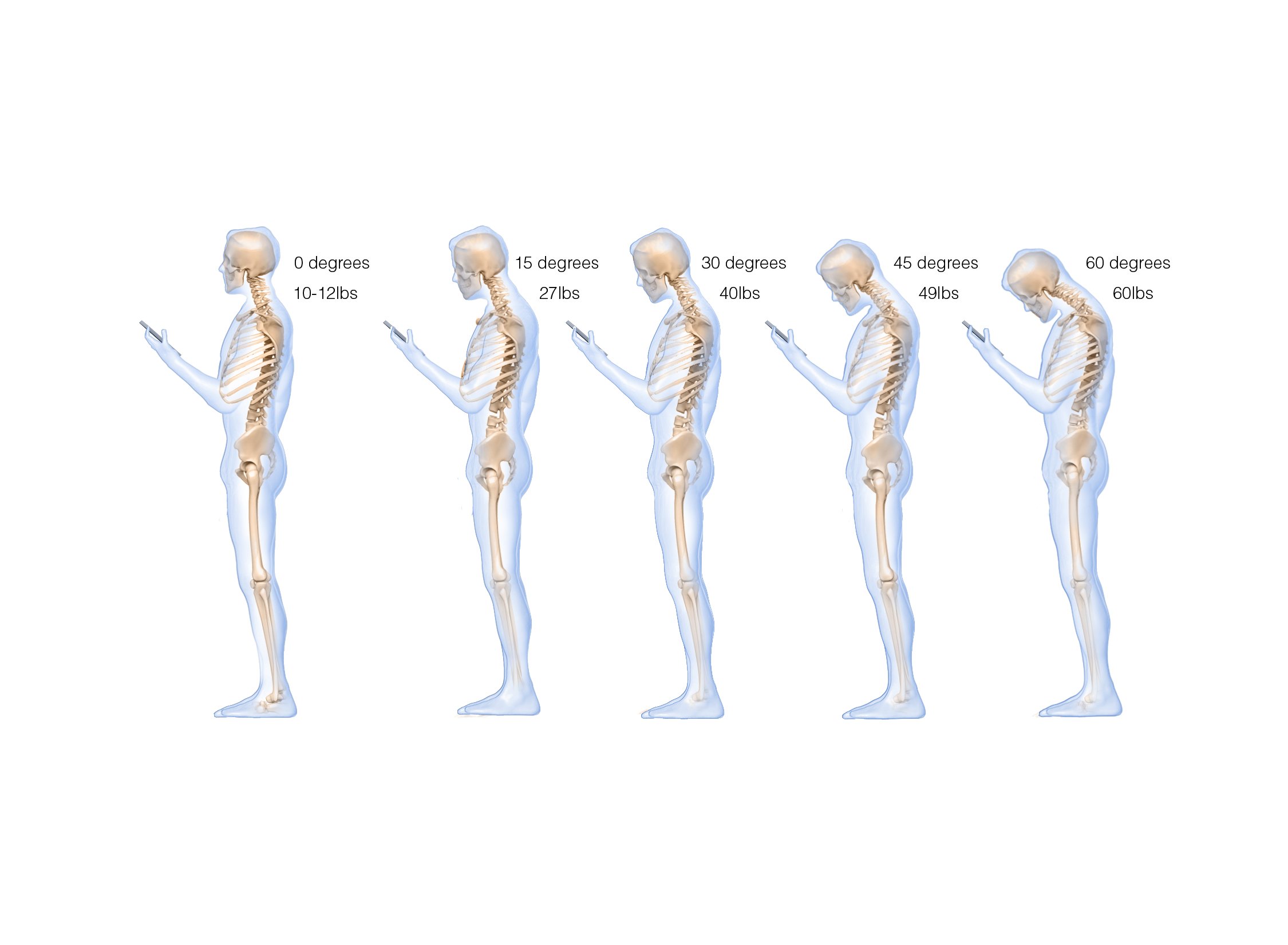The Importance of Posture and Ergonomic Workstations
Recently a prior patient called to say that he had done weeks of PT for neck pain with no relief. When I told him he was sitting wrong while working and suggested ways to correct it, his neck pain was gone the next day. It was a revelation for him and it was a small change that broke the cycle of pain caused by forward head posture.
Forward head posture refers to a state where one’s ears are further forward than their body’s vertical midline, and it has become increasingly prevalent over time. Our society saw a huge spike with the introduction of cell phones and tablets - so much so that the posture was renamed “tech neck.” It became a part of the pandemic, spiking with Covid as people started working from home and finding themselves in remote workstations that were likely not designed for optimal ergonomics. Now people are working in their bed, on their couch, or at the kitchen table for lengthy periods of time. We also see spikes during winter as people huddle deep in their jackets, shoulders forward in an attempt to insulate and increase body temperature.
This posture can result in headaches, neck pain, jaw pain, upper back pain, or shoulder pain. Suffice it to say that sitting posture and ergonomics become a broken record in our clinic - and we will never stop playing it. At Congruency, patient education is one of the hallmarks of our care. We believe that awareness of ergonomics and posture is even more important than exercise. Thirty to sixty minutes of exercise just can’t undo 8 to 10 (sometimes 12) hours of sedentary working.
Most of my patients will complain that sitting with “good posture” all day is simply too exhausting or mentally taxing. Though there is an ideal posture and it’s important to recognize what that position is, it is never my expectation that someone remains in it for the whole day. Truly, our bodies are incredibly resilient and should be able to assume and move out of a variety of postures. The most trouble happens when we consistently get stuck in one poor posture -usually the aforementioned forward neck posture. The strain from gravity is maintained on the same structures and results in some muscles (the back of the upper neck and the front of the chest) getting short and tight while others (like the front of the neck and the upper back) end up getting stretched out and weak. With that in mind, it’s more important that we do our best to avoid poor posture and less that we obsess over seeking perfect posture.
Another great way to improve the likelihood of developing good postural habits is through support. The body does become fatigued over the course of the day. The purpose of an ergonomic setup is to decrease the burden on our muscles and allow our body to rest so our minds can do the work. I’ve even gone so far as to recommend a gamer chair to people who have chronic fatigue or significant instability in their necks to further emphasize comfort.
Sitting all day, even with a great ergonomic setup, does not take away from the fact that we weren’t meant to be sitting all day. A stand-up desk is an excellent option as well as taking regular breaks for physical activity. It stimulates the mind and reduces the tightness in our hip flexors, and takes compressive load off of the back. Similarly, a laptop was initially designed for travel and short term use. It is impossible to use correct body mechanics for the neck/shoulders/arms with a laptop. A separate monitor positioned at eye-level and/or keyboard are worthwhile investments.
So while you are sitting there reading this blog, consider the position your body is in.
Feet- flat on the ground or on a platform
Hips- angled 90 degrees or greater to reduce shortening of the hip flexors (ie. your hips should be slightly higher than your knees)
Lumbar- support that matches the natural curve in your spine which may be different from the general population
Armrests- elbows should be in line with your torso and bent at a 90 degree angle, eliminating reaching
Keyboard- should be practically in your lap, wrists straight and resting
Monitor- at eye level and about a foot away from your body (eye strain is a popular cause of FHP so keep your prescription up to date)
Back- is leaning against the chair, which may be upright or slightly reclined, chest open, shoulders down and relaxed
If you have pain that increases over the course of your work day, perhaps building an awareness around how you are sitting could have a real and positive impact on your physical well-being. Making some simple adjustments goes a long way. If you think you need help finding the right setup or feel you’re stuck in your forward head posture and need manual therapy to get to a better position, don’t hesitate to reach out. Email info@congruencypt.com or call us at (704) 781-7473.
~ Meg Mizrachi, PT, DPT, OCS


